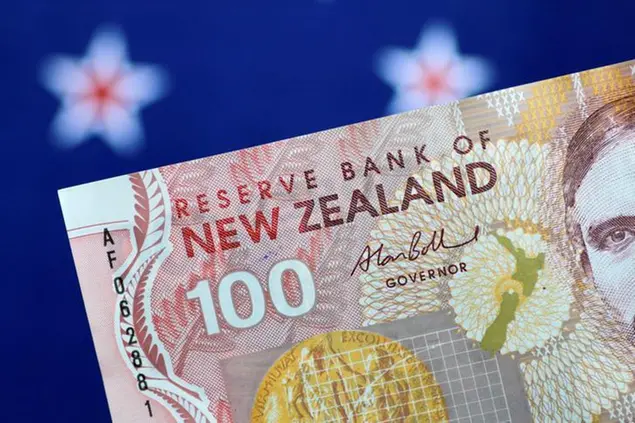PHOTO
The New Zealand dollar fell on Wednesday as a climb in the jobless rate cemented bets of an end to rate hikes at home, while the Aussie recovered from an earlier dip on soft China manufacturing data.
The kiwi dollar slipped 0.4% to $0.5804, after plunging 2.9% last month to hit a fresh one-year low of $0.5774. It has been undermined by an uptick in New Zealand's jobless rate to the highest in more than two years, adding to signs that rate hikes are working to slow down demand.
Two-year swap rates fell 12 basis points to 5.4650%, the lowest since early September and a long way from their October peak of 5.835%.
The Aussie was 0.1% lower at $0.6330, having recovered from an earlier dip to $0.6318 as downbeat findings from a private factory survey in China reinforced fears that the vast manufacturing sector is not on a solid footing.
"Much of the weakness in the Aussie and Kiwi reflects poor China data and faltering domestic growth; we think these headwinds have largely run their course," said analysts at Capital Economics.
The Australian dollar tumbled 1.5% last month to a new one-year trough of $0.6271, although it still outperformed other major currencies as a slew of economic data supported the case for higher interest rates from the Reserve Bank of Australia.
Markets are seeing an almost 70% chance that the RBA would have to hike by 25 basis points to 4.35% when it meets on Nov. 7, and rates will have to peak at 4.6% by mid-next year.
That contrasted with no more moves from the U.S. Federal Reserve, with the yield differential between 10-year Australian government bonds and Treasuries turning positive for the first time since August. The spread was last at 4 basis points.
Attention is now turning towards the Fed meeting later in the day where rates are seen on hold, although it could still spark some volatility in the markets.
Overnight, U.S. data showed wages and salaries rose solidly last quarter. (Reporting by Stella Qiu; Editing by Sonali Paul)
